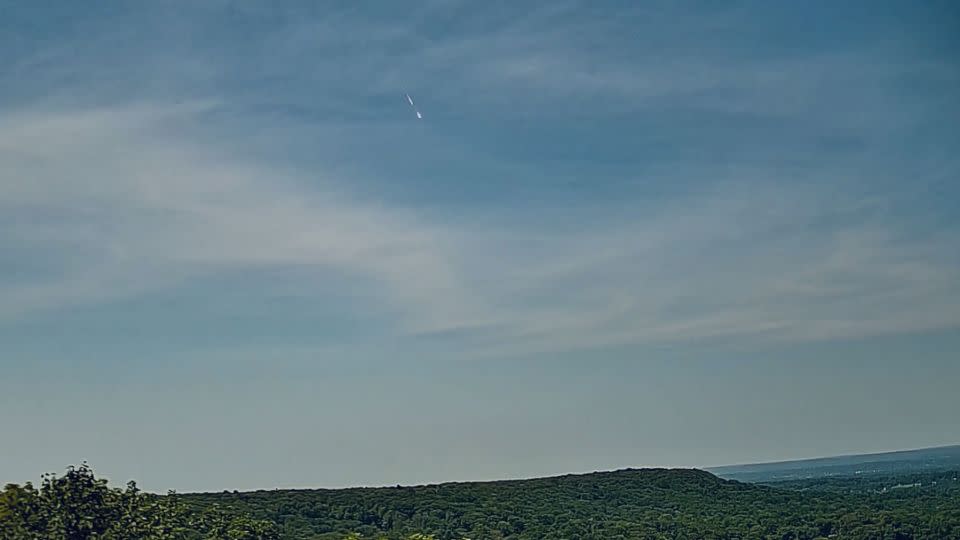What is known about the daytime fireball seen over the New York metropolitan area

Sign up for CNN’s Wonder Theory science newsletter. Explore the universe with news on fascinating discoveries, scientific advancements and more.
A meteor bright enough to be spotted in broad daylight streaked across the sky on Tuesday morning, catching the attention of several East Coasters who documented their sightings.
The fireball, defined as a meteor brighter than the planet Venus, is estimated to have soared over New York City before traversing a short path southwest and disintegrating about 31 miles (50 kilometers) above Mountainside, New Jersey, said Bill Cooke, lead of NASA’s Meteoroid Environment Office.
The meteor was likely about 1 foot (0.3 meter) in diameter, which would have made the rock bright enough to see during the day, Cooke said. Spying a meteor of this size is a rarer occurrence than catching sight of the smaller particles a few millimeters (less than an inch) in size typically seen in the night sky.
The American Meteor Society received over 40 reports of a fireball sighting at around 11:15 a.m. ET over New York, New Jersey, Connecticut and a few other states in the US Northeast. The society confirmed that two videos submitted to AMS included footage of the fireball. One clip came from a home security camera in Wayne, New Jersey, and the other from a dedicated meteor camera system positioned in Northford, Connecticut.
During the same time eyewitnesses said they observed the fireball, several other spectators reported a loud sound as well as shaking in the area. A meteor can make an explosive sound when the rock breaks apart into smaller pieces, creating a “pressure wave,” Cooke said.
This type of fracturing could also have caused the ground to shake. But NASA cannot confirm whether the meteor’s appearance was linked to these two events, since infrasound detectors used to pick up low-frequency sound in the area were oversaturated by military activity simultaneously happening in the south, he added.
Did the fireball leave behind meteorites?
It’s also possible for a meteor to travel fast enough to create a sonic boom if fragments survive entry into Earth’s atmosphere and reach the lower layer, said Robert Lunsford, the fireball report coordinator for the American Meteor Society.
“When sounds are heard from a fireball, this indicates that some fragments survived down to the lower atmosphere and may have left small remnants of the original fireball on the ground. These remnants are traveling much faster than the speed of sound,” Lunsford said in an email.
However, this fireball likely did not create any meteorites, the term for a meteoroid that makes it to the ground, as it had disintegrated in the sky due to its size and speed, Cooke said.
The last fireball reported in daylight over the area was about a year and a half ago, Cooke said.
“You’re looking at a maybe once a year–type occurrence,” but the timing of the fireball was ideal to spark a lot of attention, he added. “People were out walking, doing their daily lunchtime thing, and all of a sudden this streak flashed across the sky — it was in the right place and the right time.”
If sky-gazers are looking to catch more glimpses of fireballs, there are several meteor showers set to peak within the next few weeks. The Southern Delta Aquariids could offer a sight of 20 meteors per hour at the end of July, and the Perseids could bring upward of 100 meteors per hour in mid-August, according to the American Meteor Society.
For more CNN news and newsletters create an account at CNN.com

